Китайская доогнестрельная артилерия - [143]
Chinese pre-gun artillery had long been known for its incendiary projectiles but in the 10-th–13-th centuries the use of powderlike and subsequently powder compositions made them multipurpose and high-casualty-effect projectiles. According to sources, proto-powder came to the Chinese scene in the second half of the 8-th century while at the end of the 9-th century and the beginning of the 10-th powder composition found military application.
The early powder compositions, having only deflagrating properties, were employed as a powerful fire agent. This legitimate stage in the development of powder formed the historically unavoidable first stage in the evolution of powder weapons as predominantly incendiary. There are no grounds for presenting them as guns above all because the early powder had no adequate propelling properties.
At the initial stage of the period of transition from projectile weapons to guns the employment of powder projectiles in pre-gun artillery formed the main direction of development of the powder weapons. This lends substantial importance to the elucidation of essence of the term «huo p'ao», which occurred in 10-th century sources. An analysis of texts compared to data on the structural principles of weapons and the terminology of the missile process permits to identify 10-th–13-th century huo p'ao with «fire projectile», in other words, the stonethrowed artillery powder projectile.
However, there were differences in the operation and tactical function of huo p'ao. Among the projectiles described in «Wu ching tsungyao» fragmentation-incendiary and fragmentation-explosive ones stood out already in the 11-th century. The logic of evolution of the projectiles» combat employment resulted in purposeful efforts designed to increase the powder's explosive potential. At the end of the 12-th century and the beginning of the 13-th China saw the effective employment of high-explosive powder projectiles, which had grown large and heavy by the close of the 13-th century. A substantial role in tlie subsequent emergence of early metal barrels in Chinese guns was played by the experience of utilization of metal bodies for these projectiles. Powder compositions also fund application in various toxic and signal propulsive projectiles.
Data contained in Chinese sources invite some assumptions regarding the early stages of evolution of the powder weapons. This makes pertinent a classification of the stages of evolution of these weapons which embraced the changeover from projectile artillery to guns, which was advanced back in 1949 by the noted Soviet weapon expert and scientist V.G. Fyodorov. His classification, which merits recognition but, regrettably, has failed, to gain publicity, justly divides the transitional period into the stages of incendiary weapons, flamethrowed weapons and guns. However, Fyodorov's definitions of the stages are not flawless. Proceeding from the propulsive, energy factor which is adopted in the general classification of epochs in artillery history, the author suggests basing the classification of siages of the transitional period of powder weapon history on the employment of characteristics of powder's explosive transformation (in a definite historical sequence — from deflagrating to propulsive), which found expression in the form of their utilization in different types of weapons — incendiary weapons, flamethrowed weapons and guns. The stages of the transitional period can he summed up as follows:
1. The employment of incendiary and subsequently feebly marked explosive properties of the early powder-like, mixtures in powder projectiles of various designation which were propelled by mechanical weapons of the pre-gun type.2. The employment of feebly marked propulsive characteristics of linearly powder mixtures in ejection of fire and products of incomplete combustion of powder from barrel-type pieces of the flamethrowed type.3. The employment of propulsive properties of powder in ejection of bullets and projectiles from barrel-type pieces, in other words, guns.
On the 10-th–13-th centuries projectile artillery substantially gained in importance in the military operations conducted on Chinese territory. Chapter Five contains an elaborate discussion of the tactical employment of arcballistes and stonethrowed machines at all stages of the combat, the artillery, combat formations, the types and methods of throwing, etc. During the attack on the fortress projectile artillery was to destroy enemy defence installations and missile and protective means on the main rampart, enemy personnel on the fortress wall as well as military and civilian objectives, provide artillery cover for friendly attacks and inflict losses on the garrison and population within the fortress. In the course of fortress defence the defenders» projectile artillery was to prevent the disposition of enemy troops, siege equipment and means of projectile next to the wall, destroy enemy personnel and siege equipment during the attack and storm and disrupt enemy preparations for attack and the system of siege or blockade by strikes of projectile weapons. Artillery ordnance, for example, was successfully employed in incapacitating enemy commanders. For instance, Chinese local chronicles contain interesting accounts of the death around the fortress Tiaoyü-cheng of the Mongol Meng-ku Khan from a wound inflicted by a stonethrowed machine projectile in 1259.
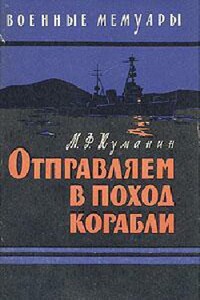
Тяжелая обстановка сложилась на Черном море в начале Великой Отечественной войны. Враг занял большую часть побережья. В наших руках в это время оставалось всего два небольших порта, не рассчитанных на обслуживание крупных боевых кораблей, — Поти и Батуми. На них-то и стал базироваться почти весь Черноморский флот. Моряки и трудящиеся городов в спешном порядке углубили гавани, создали ремонтные заводы и мастерские, склады топлива и боеприпасов, организовали оборону портов с воздуха, моря и суши. О самоотверженном труде многих тысяч советских людей, обеспечивших боевую деятельность флота, рассказывает в своей книге генерал-лейтенант Михаил Федорович Куманин, в прошлом командир Потийской военно-морской базы.
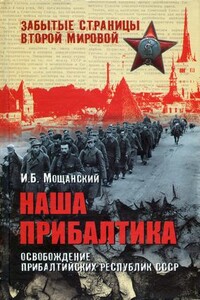
Эта книга посвящена нескольким малоизученным для отечественного читателя операциям Второй мировой войны. Первая часть представленной работы связана с освобождением прибалтийских республик СССР. В последнее время избранная тема стала предметом политических спекуляций для правящих кругов независимых государств Прибалтики, поэтому автор акцентирует свое внимание именно на военной составляющей происходящих событий, касаясь национальных формирований Красной армии и войск СС только в контексте военного противоборства.
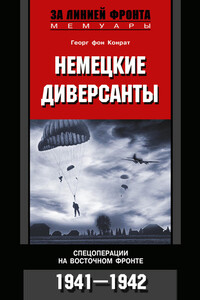
В своей книге Георг фон Конрат вспоминает о том, как ему довелось участвовать в ответственных операциях в Прибалтике и Одессе, успех которых предопределил ход военных действий в 1941 году. Автор был призван к исполнению долга перед Третьим рейхом в пятнадцатилетнем возрасте, он рассказывает о тяжелых испытаниях, которые ему пришлось пережить в разведшколе во время специальной подготовки.
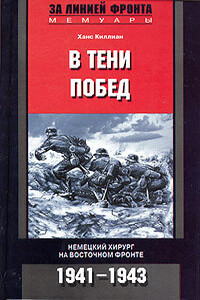
Профессор, доктор медицинских наук Ханс Киллиан участвовал в двух мировых войнах. В качестве хирурга-консультанта он курировал работу военных и полевых госпиталей на всем Каунасском направлении и был свидетелем кровопролитных боев в районе озера Ильмень и Старой Руссы, столкнувшись со страшными последствиями суровых морозов зимы 1941/42 года. Расчет на то, что победа на Восточном фронте не потребует усилий, провалился, и солдаты заплатили страшную цену за просчет высшего командования.
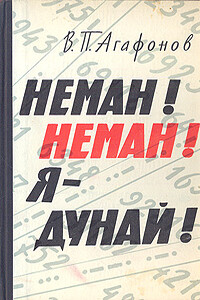
В великой победе, которую одержала над врагом Советская Армия, не последнюю роль сыграли воины-связисты. Воспоминания В. П. Агафонова — первая книга о связистах в серии «Военные мемуары». В дни Великой Отечественной войны автор являлся начальником связи 11-й, а затем 27-й армий, с которыми прошел боевой путь от Немана до Дуная. Тепло и взволнованно рассказывает В. П. Агафонов о своих товарищах, с которыми форсировал Днепр, участвовал в Корсунь-Шевченковской и Ясско-Кишиневской операциях, сражался за Балатон. Словно живые, встают на страницах книги рядовые связисты и офицеры — люди, беззаветно преданные воинскому долгу, люди, чье мастерство мужало в боях.Эта книга с сайта «Военная литература», также известного как Милитера.

В книге рассказывается история главного героя, который сталкивается с различными проблемами и препятствиями на протяжении всего своего путешествия. По пути он встречает множество второстепенных персонажей, которые играют важные роли в истории. Благодаря опыту главного героя книга исследует такие темы, как любовь, потеря, надежда и стойкость. По мере того, как главный герой преодолевает свои трудности, он усваивает ценные уроки жизни и растет как личность.